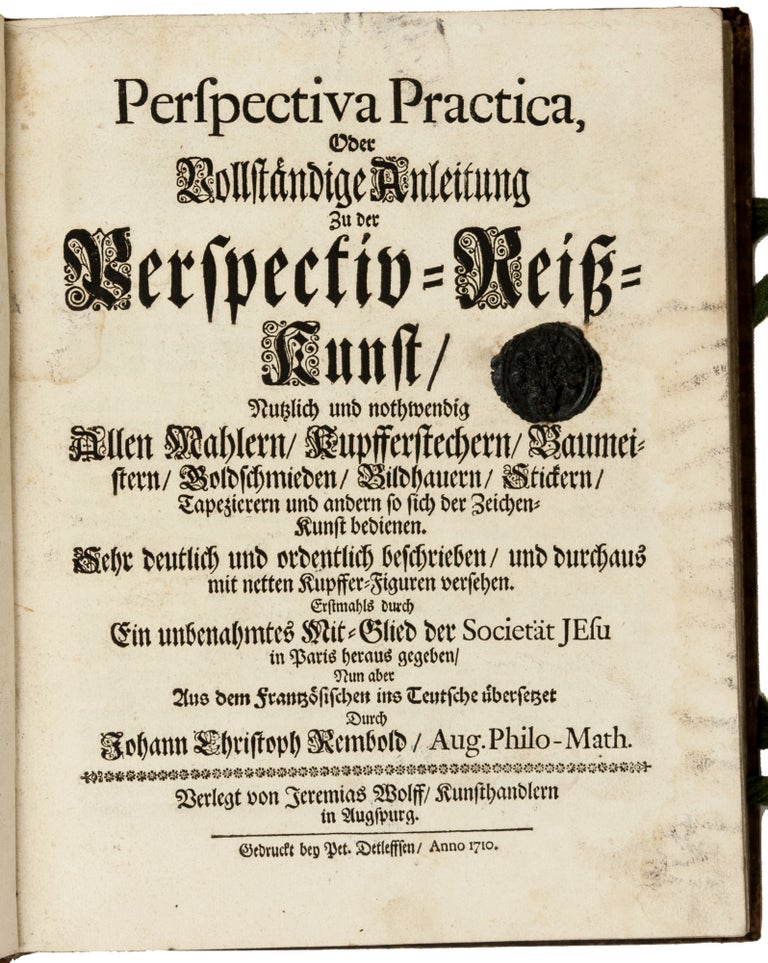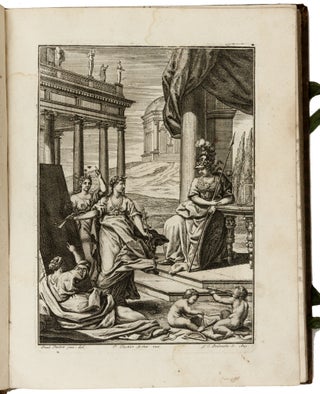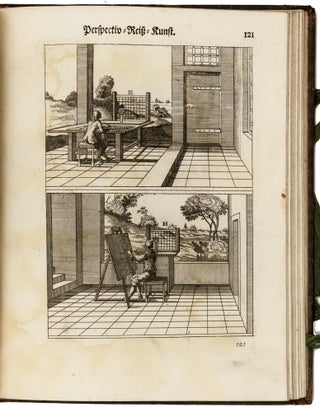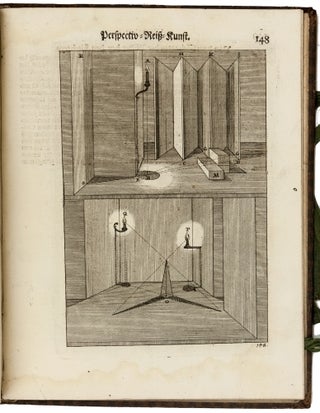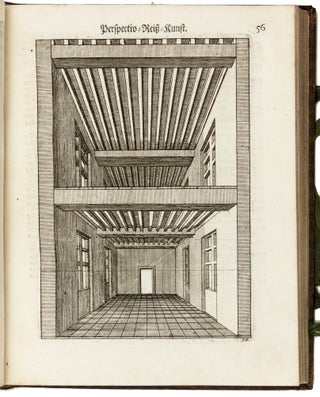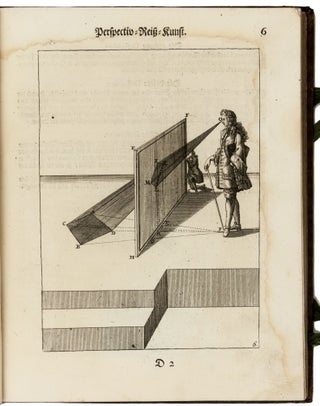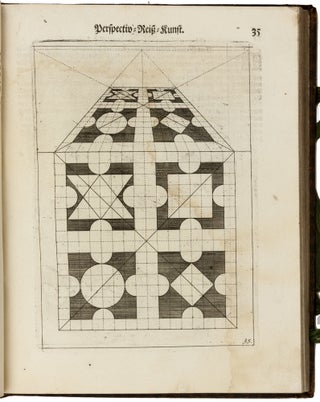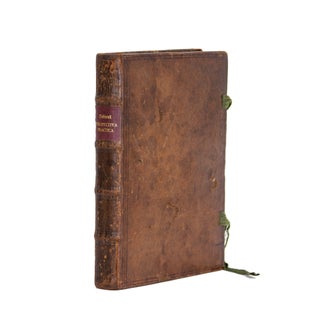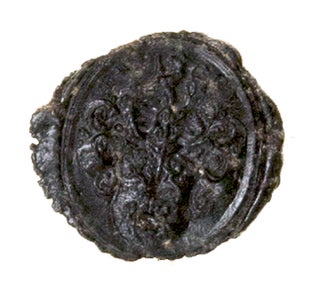Perspectiva practica, oder Vollständige Anleitung zu der Perspectiv-Reiss-Kunst.
4to. [22.5 x 17.5 cm], (8) ff. including engraved frontispiece and title page, 150 pp. (verso), 150 engraved plates (recto), (5) pp., with five half-title pages not in pagination. Bound in mottled calf, blind-tooled triple frame on the covers; four raised band, leather label on spine with author and title, four green cloth strips attached to the covers (two on each side). Worm holes on the binding not affecting the structure. Ex libris "Z knih Rodu Kloučkova" and MS note "Dar Vlasty Vijsecke 1952" on front pastedown. Armorial wax seal with letters "B.D.G.W." on the title page. Printed on thick paper. with a few light marginal water stains, occasionally touching few pages of text and images. A very good sound and genuine copy. First German-language edition and well-preserved copy of the Jesuit’s five-part book on the uses of “practical perspective.” First published in French in 1642 in response to Girard Desargues’ 1636 Manière universelle, in which Desargues advanced a new ‘double-scale’ method of calculating perspective, Dubreuil’s much longer work appeals to the “painters, engravers, architects, goldsmiths, sculptors, embroiderers, tapestry-workers and all others” for whom an understanding of perspective is necessary, emphasizing practicality over what he sees as Desargues’ uselessly theoretical and heterodox approach. His remarks in the introduction that he intends to use clear language and to avoid confusing diagrams are clearly passing shots at the technical complexity of his rival’s work. Along with Pozzo’s treatise, the present work was among the most widely employed by Jesuit (and not just Jesuit) German architects in the early 18th century. Most of the 150 full-page plates provide simple geometrical exercises for rendering columns, entablatures and room interiors, as well as curved surfaces such as casement arches, spiral staircases, and groin-vault ceilings. Similar lessons follow for smaller objects—beds, chairs, swinging cupboard doors—in addition to shadows and human figures. Numerous reissues and translations of the Perspectiva—in France in 1651 and 1663, in England in 1672 and 1698, and the present translation by the Bavarian Jesuit Johann Rembold, a full 70 years after its first printing—suggest that its facility as a reference far outlived its relevance as a polemic. Jean Dubreuil (1602-1670), a Jesuit, lived and worked in Paris. OCLC: Michigan, NYPL, Getty, Penn; also in Vagnetti (EIIIb32).
* Vagnetti, EIIIb32: Cicognara, #855: “Opera delle piu ben fatte, con facilita di metodi, e moltiplicita di esempi …”.

